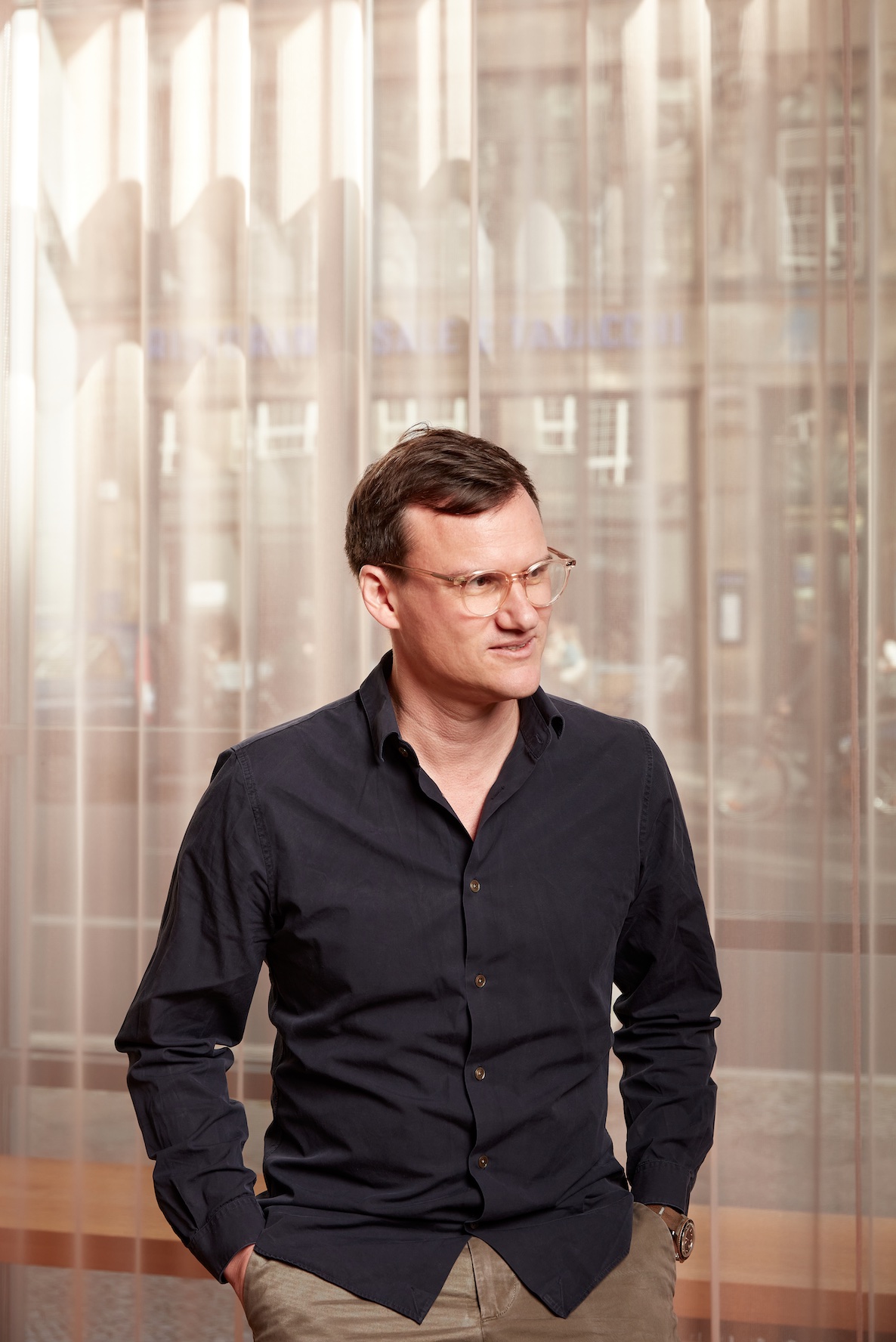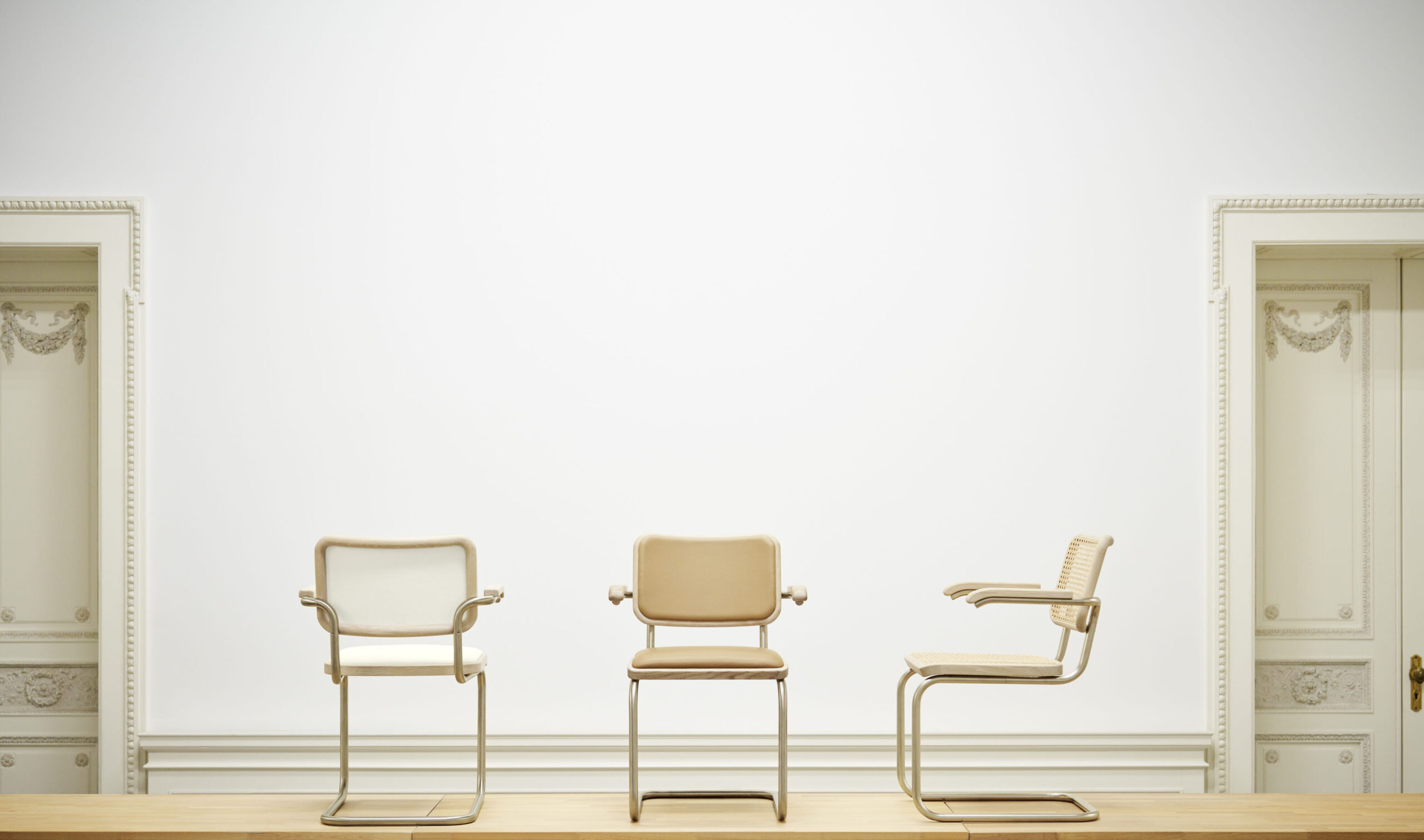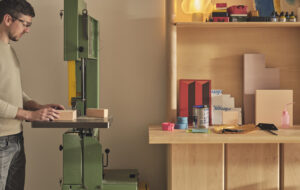
Sixteen years after first featuring Kinzo on our front cover, OnOffice checks in with the high-flying Berlin architecture firm to talk mixed-use, AI and company culture
The cover of the September 2008 issue of OnOffice features three men in suits arranged like plastic toys – elbows and knees locked, hands open as if waiting to be passed a Red Dot Design Award. Equal parts Playmobil and Kraftwerk, the photoshoot captured the offbeat nature of a studio that made its name curating illegal club nights in free-spirited 1990s Berlin. The group was, said the article’s title, ‘Ready for take-off’. And take off it did.
Almost two decades later, Kinzo remains at the forefront of workspace architecture and product design, despite a turbulent market. Sean McGeady sits down with co-founders Karim El-Ishmawi (opposite right) and Chris Middleton to discuss client insecurities post-pandemic, finding harmony in mixed-use spaces and applying city planning methodologies to multipurpose offices.
OnOffice: How much has your practice changed since 2020?
Karim El-Ishmawi: Our goal hasn’t changed: making sure the transformation process is done right and in collaboration with users and stakeholders. But there’s been a lot of insecurity on the client side. Giving clients trust in a future-proof design has become more important than just changing from an old way of working to a new way of working.
Chris Middleton: We simulate different scenarios for different users. Clients don’t just want a nice- looking office. They want an office that functions, is authentic and meets their particular needs.
OO: How do you predict what workers will need in, say, 20 years?
CM: We interview different client groups. We do workshops and get to know them and the way they work. We help them see themselves in an abstract way and position them in the future. Maybe not 20 years, but five or 10. This is important because the users in the company today won’t be the same users 10 years from now, but they know the most about their business and their way of working. It’s this knowledge that we need.

OO: Do you get different feedback from those at the top of a company’s hierarchy than those further down?
KEI: It’s the nature of the beast. There’s a company vision that, most of the time, is on the other side of the planet to the individual perspective. As a person, you have your work environment, your benefits and comforts, your personal development, your colleagues, maybe the food in the canteen. But the company vision is about developing the company into something new, becoming a market leader or hiring the best people. These two ends have to be treated differently but brought together. In between the polar opposites, there’s this cultural glue that has to be formed.
OO: How long have you been thinking about making working spaces multipurpose?
CM: We started to think about this when we first started designing offices. Back then, we called it ‘hybridisation’, because we wanted to hybridise several functions in one object. Since then, we’ve widened our field. Especially now, after the pandemic, everyone realises that the monofunctional office is gone. It doesn’t make sense anymore. Our ambition is to create spaces, rooms and furniture settings that cover several scenarios. If you look at a city, it’s about diversifying: opening up and having a number of options for each user, so that each user finds their favourite spot.
KEI: It’s also about intensifying usage to create the buzz necessary for it to be perceived as a place worth going to. You wouldn’t go into a restaurant that’s empty, because you’d think the kitchen’s rubbish. But it’s not necessarily a bad kitchen – it’s just not populated. It’s all about bringing people together, not just once a day for five minutes but continuously, by creating a programme of usage with different zones and activities.
CM: It’s important to keep in mind the circulation of the building. Where do people walk? Where do they perceive the uses to be? That’s the buzz Karim is talking about. When you enter our office, for example, you can feel this energy. This is an experience we always try to implement.

OO: How important is it to strike a balance between spaces for deep work and areas for socialising?
CM: The more diversity you can generate, the better. But you also have to think about the passage of time: during the week, during the day, what happens when and how.
KEI: We all know districts where there are people everywhere during working hours, and then at night or weekends it’s a dead zone – empty Styro cups blowing across the street. It’s all about bringing public spaces, areas and functions into buildings that are normally run privately or by a corporation. This same thinking behind how a city works can also be applied to the office.
OO: Do you have any thoughts on AI?
KEI: With AI we can generate mood images a lot faster by prompting it with the characteristics that we want to express. We’re happy about this kind of support. It can be a fruitful partnership.
Images by Sebastian Dörken
Enjoyed this article? Subscribe to our weekly newsletter here






















